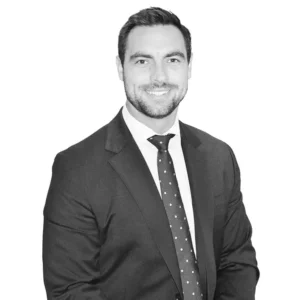We all know that life is full of surprises, and we should know that it’s important to have a plan to manage life’s surprises. In finance, we call these surprises risk. Risk is the chance that something could wrong.
There is a big difference between being proactive and reactive when it comes to managing risk. Proactive means that you have a plan and reactive means that you don’t. Today we will cover the importance of being aware of the risks within your financial plan, and we will discuss a format for proactively managing these risks.
But first, let’s start with a story about some of the most astute risk managers I’ve ever encountered. Interestingly enough, these risk managers are not even in finance. Is your interest piqued? Great! Let’s sign into this week’s TOM.
*******************************************************************************
On November 6, 2017, our office hosted the Secretary of the Treasury, Steven Mnuchin and Ivanka Trump as they were on a speaking tour discussing the Tax Cuts and Jobs Act of 2017.

It was exciting to have the opportunity to meet these two, but the most interesting part of the experience was watching the preparation of the Secret Service Agents.
The Secret Service began inspecting the location a week prior to Mr. Mnuchin’s and Mrs. Trump’s visit. They left no stone unturned. Every attendee had a background check, and every entrance, exit, and window was studied for all the potential risks that it posed. This analysis was extensive, to say the least, and to think that they do this day in and day out for EVERY event these two attend. Wow.
Honestly, it was fascinating. The likelihood of something going wrong was a low probability, but regardless they were prepared.
I imagine that if something was to happen that these agents would immediately implement their risk management plan. They would not be slow to act, they would not lean on their emotions for a decision, but rather they would implement the strategy that they had already thought through.
I hope that you are picking up on that I was inspired by their diligence and preparation as Risk Managers. I came away from all of what I observed thinking that we should approach our financial planning process with this same vigor. Each of us is surrounded by potential risks that could be debilitating to our financial plan and this is why being proactive about risk management is key.
**********************************************************************
The Common Risks You Should Know
Let’s take a look at the common risks that an investor faces and walk through strategies around managing these risks. As we review these examples, I’d encourage you to focus more on the process than the solution. The key to being an excellent risk manager is to become great at the process and learning how to apply it to your own personal situation.
Now, for those examples:
1. The Lost Decade Risk
On Monday, January 3rd, 2000 the S&P 500 had a closing price of 1,455.22. Ten years later, on Thursday, December 31st, 2009 that same index closed at 1,115.10. With dividends reinvested, that represented almost a 6% loss over that period. Many refer to this as the “lost decade,” a time when investors had to stomach the plummeting of two market cycles – the Dot Com crash and the Great Recession – in one decade.
Needless to say, if you retired at the start of 2000 things didn’t go as planned. You would have created a financial plan that depended on some historical market appreciation to fund your goals and your retirement lifestyle, but unfortunately, the market would spend 10 years not providing that “historical market average.” Markets can go a long time without being “average,” and this can pose a risk to a retiree.
To be a prudent investor and agile risk manager, you need to come up with a strategy on how to manage this potential risk. If you don’t have a proactive plan in place, then the unforeseen outcome of a lost decade described above could crumble your financial plan.
What should you do? Here are two tactics to implement to help mitigate this risk: 1) Create a diversified portfolio beyond just stocks, so that your returns are not dependent on the performance of one asset class 2) Create a portfolio of income-producing (dividends and interest) investments to satisfy your expense needs, so that you are not dependent on price appreciation alone. Preferably investments with a growing income to keep up with inflation.
For further reading, see The Exercise of Diversification and Food FORE! Thought
2. The Loss of Income Risk
Cash flow is a fairly simple concept, we have money that comes in the door in the form of income, and we have money that goes out the door in the form of expenses.
Expenses tend to be a permanent thing, but income has an element of fragility to it.
Income can be suddenly, and sometimes permanently, disrupted by a job loss, an injury, or even a passing. As tough as it may be to consider these possibilities, these are risks that need to be accounted for, and a plan must be in place.
Let’s take a closer looks at these three potential causes of income loss (job loss, injury, or passing) and match each with their respective risk management solution:
- Establish an emergency savings account which holds 3-6 months of expenses in case you lose your job and need to supplement income during this transition period.
- Research your company provided disability insurance to see if it will suffice if you were to sustain an injury and if any additional coverage is needed.
- Purchase enough life insurance to cover 10 years of income in case the primary breadwinner can no longer work or passes.
Again, these are not the only solutions, but to act as examples of how you should identify risk and build a strategy/plan around managing a particular risk area of your life.
3. The Long Term Care Risk
Morningstar contributor, Christine Benz writes, “If there’s a single unsolved problem in the retirement plans for many middle- and upper-middle-income adults, it’s what to do about long-term care costs later in life.” Benz research goes on to state that “52% of people turning age 65 will need some type of long-term care services in their lifetimes.”
For some investors, they have accumulated enough assets to “self-insure” these potential long-term care costs. For others, they will rely on the support of programs like Medicaid to provide their care needs. Somewhere between those two ends of the economic spectrum, there exists a population of people that need to decide how they will manage this long term care risk.
Managing long term care risk is difficult because it is often expensive, the insurance premiums are typically not fixed, and there are a number of different types of coverage available – some simple and some more complex.
Insurance will often be one common solution within a risk management plan, so it’s important to remember how insurance works. Let’s take a look at this simplified graph to illustrate this point:

The problem that Long Term Care insurance presents is that it is a high probability event – 52% likelihood according to the research above – for an expensive service, medical care. Does this mean that one should not come up with a risk management plan for long term care risk? No, not at all. Actually, quite the opposite. The complexity and high probability associated with this risk means that it deserves extra attention and extra diligence. The type of care and attention that our Secret Service friends were providing our guests.
Conclusion
Remember what I mentioned at the start of this discussion, “focus more on the process than the solution.” I want to reiterate this point because I know how easy it can be to get lost in the details. When we are dealing with risk we need to 1) identify the risk 2) calculate the cost 3) identify solutions to reduce or eliminate the risk 4) implement a solution.
Again, those Secret Service Agents left no stone unturned. If you are not proactive about your own risk management plan, then one of life’s surprises could very well derail your financial plan.
The art of managing risk is not a subject that catches a lot of headlines, but something that very much deserves your attention. I hope today’s discussion sparked some ideas and helped to surface some questions about your own financial plan.
I wish you well on your risk management journey, and we look forward to discussing more TOM topics with you next week!
This is TOM signing off…





